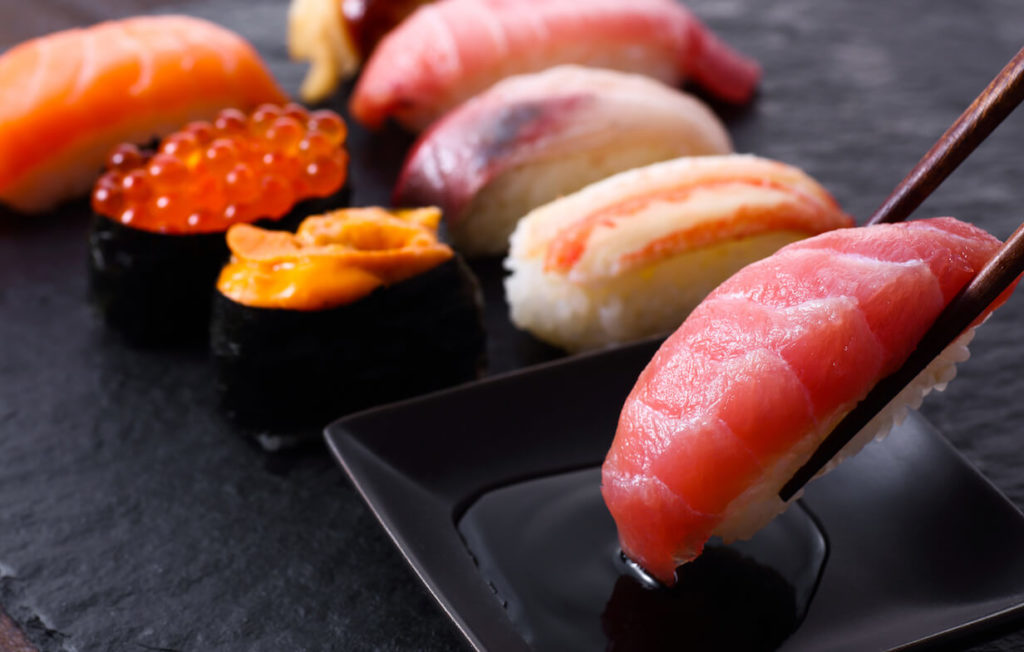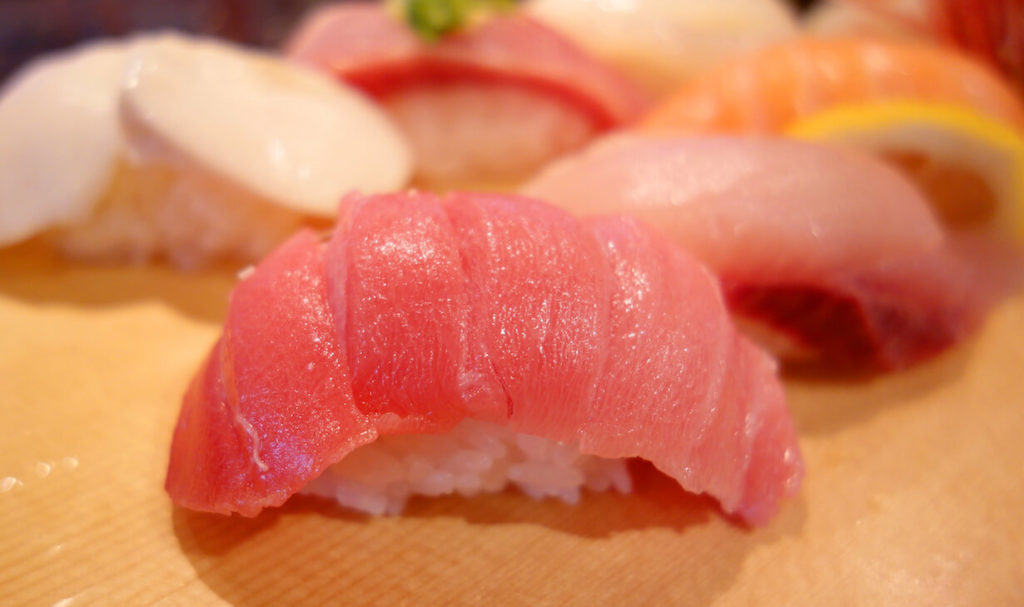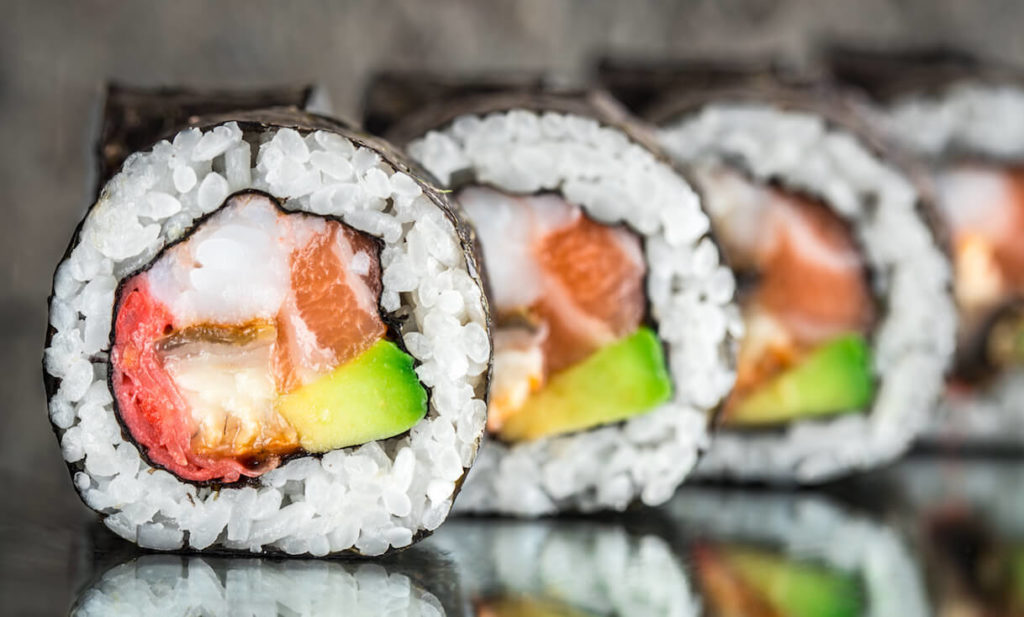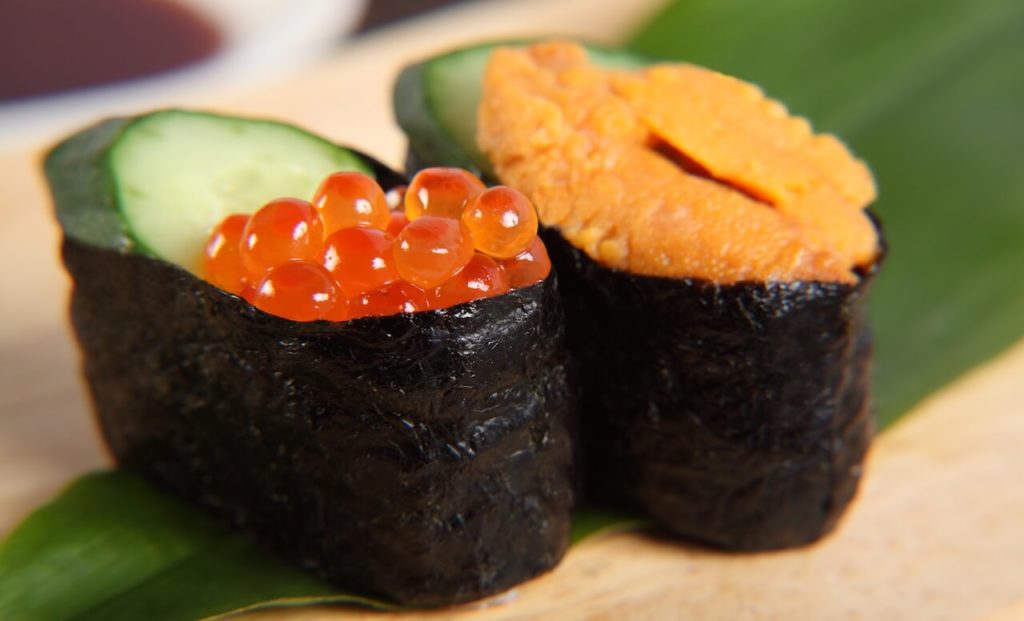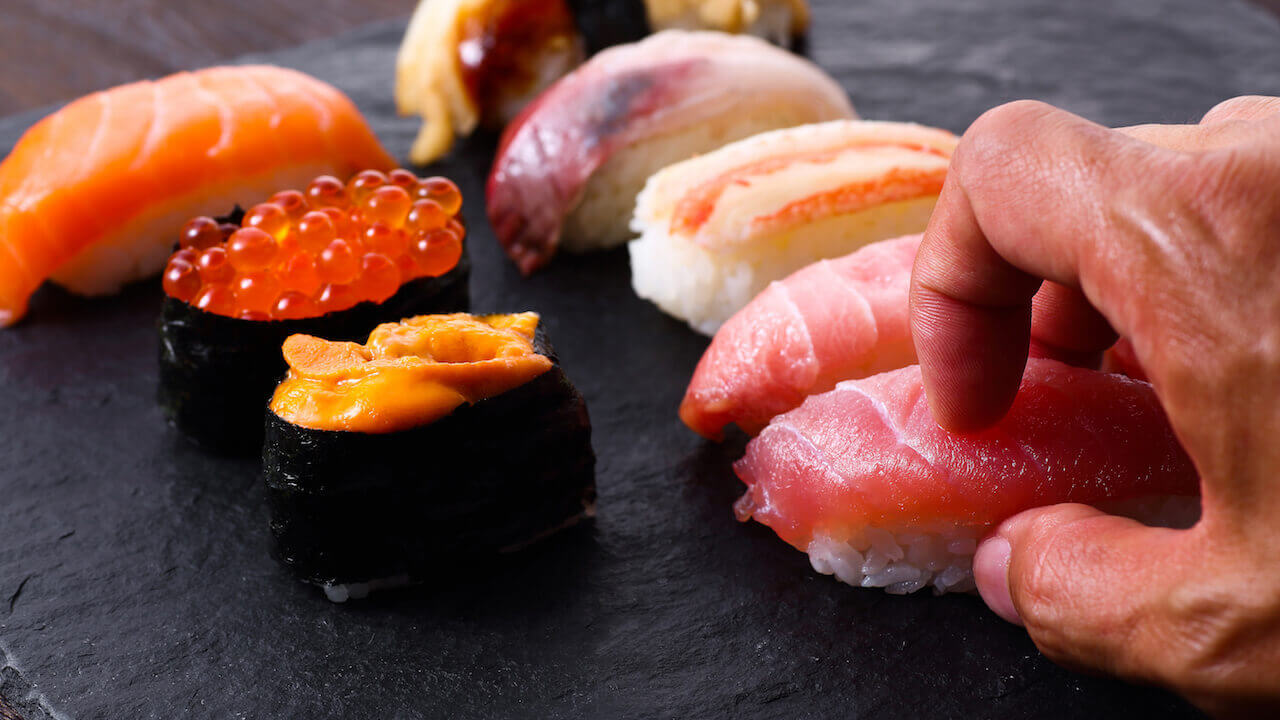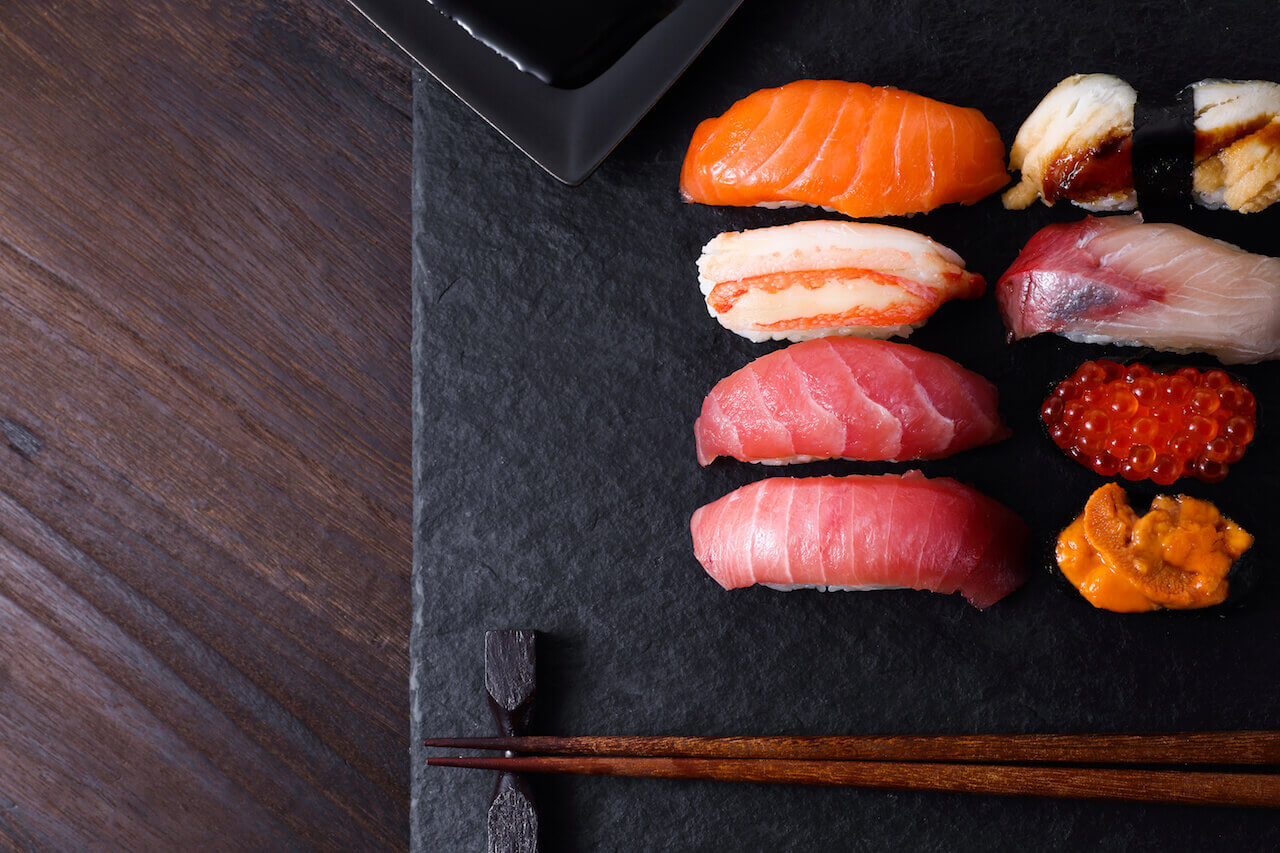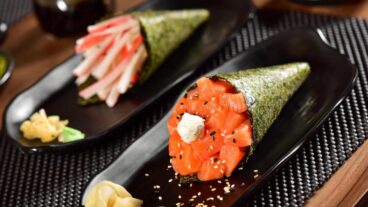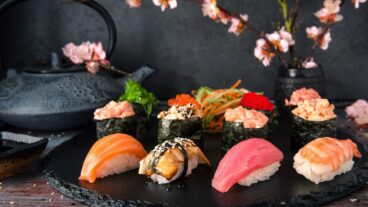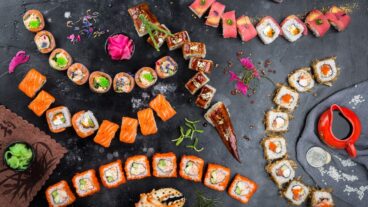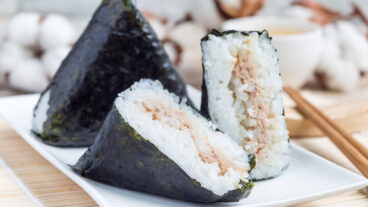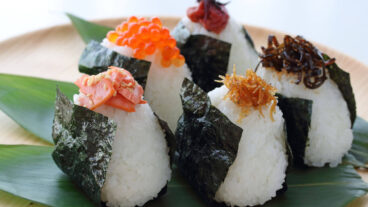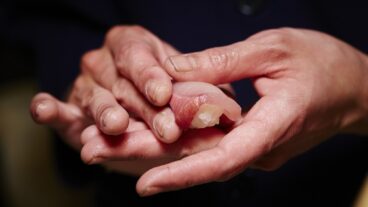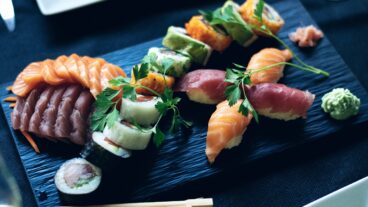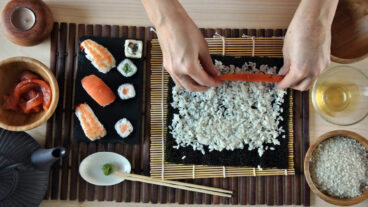Are you planning a trip to Japan? If so, you should definitely try the local sushi. If you have the chance, you should even visit a traditional, high-class sushi restaurant. However, when visiting a high-class sushi restaurant, there are some sushi etiquettes that you should know beforehand, so you can have a great experience at the restaurant. By knowing the proper sushi etiquette can also show the chefs your appreciation for their service.
In this article, you can learn about the proper sushi etiquette that way you can enjoy the sushi while having a great time at the restaurant. In addition, there are a few common etiquette tips for Japanese restaurants in general.
Quick Navigation
Sushi Etiquette
Eating sushi in Japan is rather different from everywhere else in the world, there are specific sushi etiquettes. In order to enjoy yourself to the maximum when visiting a Japanese sushi restaurant (sushi-ya). So it is good to know the sushi etiquette.
In order to learn about sushi etiquettes, we need to get familiar with the different types of sushi common in Japan. Let us take a look at the three most common sushi.
Types of Sushi
There are many different types of sushi in Japan. This article is here to help you understand sushi and share with you sushi etiquette.
Nigiri:
A very common type of sushi where there is fish or seafood topping (neta) is placed onto of small rice ball (shari). In Japan, there is a wide variety of fish options that you should definitely try.
Makizushi:
Also known as the sushi roll. While sushi rolls are very popular in the U.S. and other countries, the simple, one ingredient with seaweed(nori) wrapped sushi rolls are most common in Japan.
Gunkanmaki:
If translated directly it would be called warship roll. This type of sushi has similar qualities to a nigiri’s shape and size. However, gunkanmaki has nori wrapped around the perimeter, inside the nori the neta would be softer, lose or finely chopped ingredients, such as salmon roe, sea urchin, natto or even corn.
Now that we know about the general types of sushi, let us learn about the sushi etiquette. You might be surprised about the different etiquette tips there are.
Sushi Etiquette: Eating version
Similar to eating other cuisines, there are certain etiquette and rules. It is important to know the proper sushi etiquette, as it can reduce the amount of confusion when visiting a sushi-ya. Performing the proper etiquette can surprise the sushi chef and with your excellent etiquette, you can also show your appreciation. Let us jump right into the different sushi etiquette!
Sushi Etiquette #1: Chopsticks or hands?
For nigiri, you can choose either using your fingers or chopsticks. Nigiri used to be eaten by hand, but there are no strict rules saying you have to. It is all about preference and whichever one is easier for you. This sushi etiquette applies to sushi rolls too, since Makizushi has nori wrapped around it, it was marketed as the sushi that won’t dirty your hands back in the days. While other dishes, the common etiquette is to use chopsticks, include drinking soup.
Sushi Etiquette #2: Soy sauce
Don’t over dip your sushi into the soy sauce, as it will power over the original taste of the sushi. The key is minimal soy sauce. Also, don’t pour a ton of soy sauce into your soy sauce dish, you don’t want to be wasteful.
Sushi Etiquette #3: Dipping Soy Sauce
The best way to dip your sushi is to only dip the neta part. Rice can easily soak up too much soy sauce, and thus over dipping. However, you should never separate the neta from the shari, which is a big taboo for sushi etiquette. This is why it would be easier and recommended that you eat sushi with your hands, by flipping the sushi upside down to dip soy sauce. This way also prevents the separation of the shari. While for gunkanmaki, it would be harder to dip the soy sauce upside down, so some chefs would lightly brush a layer of soy sauce onto the neta. If not, you can apply by dipping the bottom of the gunkanmaki or use the cucumber or pickled ginger as an applicator and brush soy sauce on the neta. Using the shogo (pickled ginger) as a soy sauce applicator what the amazing Jiro recommends.
Sushi Etiquette #4: Wasabi
It is said that you should not mix wasabi into soy sauce. By mixing in with the soy sauce, wasabi loses its original flavor. It also contaminates the soy sauce for certain sushi that doesn’t require wasabi. Most nigiri already contains wasabi and if you prefer more, the best way is to apply a tiny amount on top of the neta and then gently dip into soy sauce without mixing them. Don’t get sashimi confused with nigiri sushi etiquettes. For sashimi, it is ok to mix the wasabi with soy sauce, but the same thing, don’t overdo it!
Sushi Etiquette #5: All in one bite
To truly enjoy and experience the sushi, you should eat it whole. If there is too much rice, you can always ask for a smaller shari portion. Leftover is considered also a big no-no for sushi etiquette.
Sushi Etiquette #6: Eat in order
It is best to start with white fish meat or lighter taste neta. Then move onto stronger taste fish or fish with more fat. Then move on to shellfish and then eel and end with simple makizushi. If you were to choose a course, the chef would serve you in the order that is best for tasting. Fun fact, the sweet fried egg (tamago) is considered a sort of dessert. Often times, the tamago is served as the last dish.
Sushi Etiquette #7: Eat it as soon as possible
Eating sushi fresh is very important, but remember to savor it. Eating the fish and sushi rice fresh allows you to truly taste this amazing dish.
Sushi Etiquette #8: Pickled Ginger
Pickled ginger is sliced thinly and pickled with sweet sake. It is not a condiment, but a palate cleanser. It is recommended to be eaten in between sushi.
These are all the etiquettes related to eating sushi. Now you are an expert at sushi etiquette. 👍
Sushi Etiquette at High-End Sushi-Ya
Since sushi is considered part of Japanese culture. There are some do and don’t when it comes to high-end sushi-ya. Let us take a look at the proper etiquette of eating in a sushi-ya.
Do:
- Always check if you need to reserve and there might be a cancelation fee
- Try the omakase course, this is the chef’s choice, there will be seasonal fish and a well thought-out course designed by the master chef.
- Trust the chef and if confused, it is ok to ask a few questions here and there
- Ask for removal of wasabi or smaller portion of shari if needed. But don’t leave leftover as it is considered rude to the chef.
- If given a variety of sushi on a plate, you should start eating from the left side.
- Try eating the sushi upside down, like how you would dip in soy sauce.This way you truly taste the neta.
- Not all sushi-ya accept credit card, so it is important to check first
- If dining alone or with one other person, you should ask for counter seats if possible, you can watch the chef prepare.
- Do ask if taking photographs are ok.
- Dress appropriately
Don’t:
- Refrain from wear strong fragrances like perfume or cologne, the scent can interfere with the dishes
- When sitting at the counter, don’t move the sushi serving plate from the top of the counter.
- Don’t use sushi chef’s terminology
- Don’t overstay when finished, since many high-end sushi-ya are very popular, there might be other customers waiting
- Refrain from making loud noise and cause distraction
- No smoking in general
Some of these sushi etiquettes are no brainer and others are more specific. While kaiten (conveyor belt) sushi places are less strict.
Additional Dining Etiquettes
Here are just some additional etiquette tips that are useful in Japan, in general.
- Say “Itadakimasu” before beginning your meal. This means “I humbly receive” a form of presenting your gratitude. Once you finish, you would say “Gochisousama-deshita” in appreciation of the food that was provided to you by the chef. This etiquette rule is applied to all Japanese restaurant and even at home.
- The placement of chopsticks is a very important etiquette. If there is a chopstick rest, always put it there. If not, you can gently place the tip of the chopstick on the soy sauce dish or your dish. Don’t put it on the sushi serving plate, also if placing the entire chopstick on the plate that means you are done with the meal.
- If you have special dietary requests, you should definitely notify the restaurant when reserving. This also applies to the ryokan (traditional Japanese hotels) and high-end restaurant in general.
- Don’t rub your chopstick together. This action insinuates that the chopstick is poor quality if there are some splinters, ask for a new pair of chopsticks.
- Do use the hot wet towel when given, it is to cleanse your hands before eating.
By knowing these tips you can easily fit into a Japanese restaurant.
Let’s have some sushi
These are the sushi etiquettes for sushi and dining in Japan in general. Though these tips might be a lot to remember, one key thing is to enjoy your experience. Also by knowing about the sushi etiquette, one can fully appreciate the amount of attention the chefs pay to deliver the best sushi and taste to the customer. Some of the etiquettes are to prevent the customers from coming off as rude and impolite, like having leftover or separating the neta and shari. Next time when you visit Japan, you will be ready for the amazing experience and you can also show off your sushi etiquette.
Interested to find out the top 10 most popular types of nigiri sushi in Japan?
At Top Sushi, we offer high quality, Japanese premium made sushi machines for all kinds of commercial use. We offer a wide array of different sushi machines and sushi-related machines. In addition, we provide one on one consultation that ensures the customers find the best suitable sushi machine for you and your business. If you are interested in finding out more about Top Sushi or general information about sushi machine, please check out our Sushi Machine home page.
Or you can contact us directly for catalogues and more!

